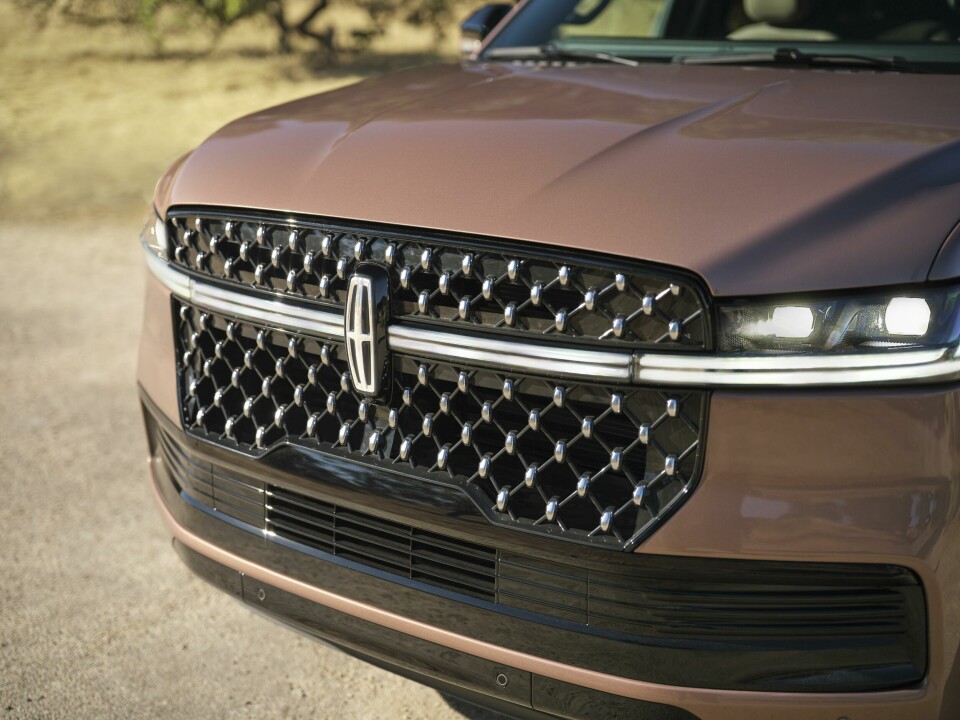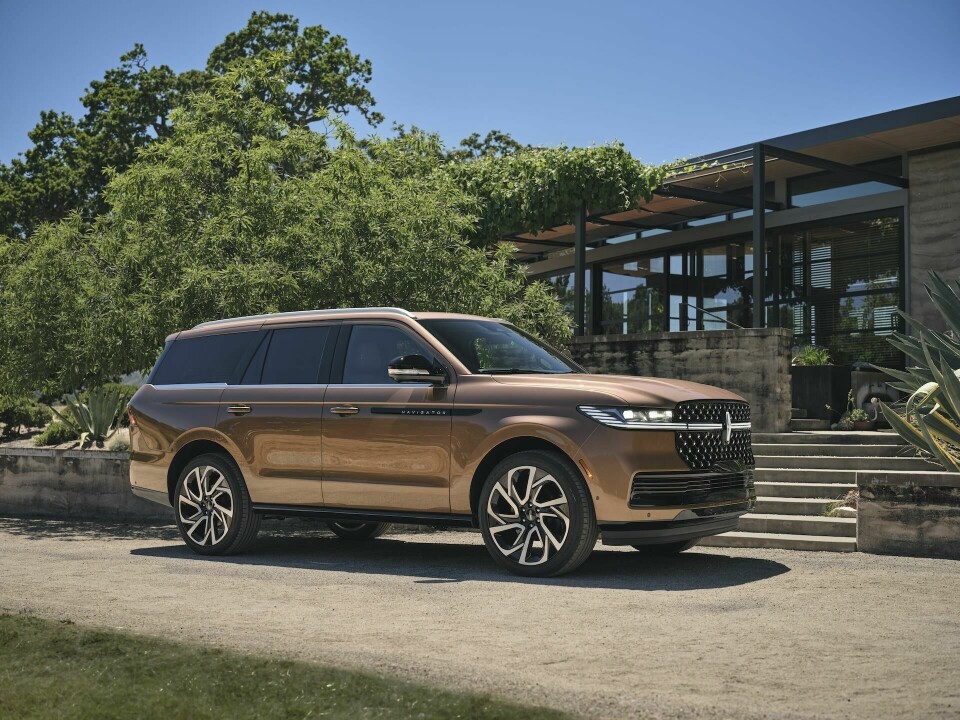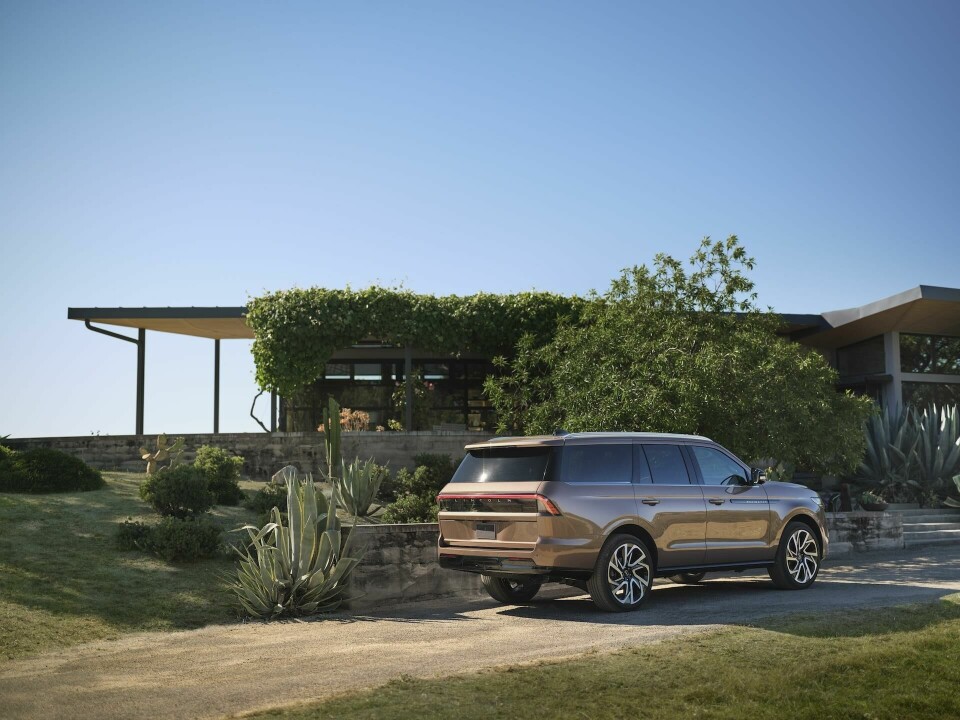
Lincoln unveils new Navigator at Pebble Beach with interior design collab
The next generation of the American SUV debuted at a multi-million-dollar home appointed with Lincoln-inspired colours and finishes, underscoring the intersection between automotive and residential design
One of the hallmarks of Monterey Car Week is the pantheon of posh party houses where brands entertain select journalists and guests, in abodes ranging from seaside mansions to mountaintop estates. This year, Lincoln levelled up with a modern home in sunny Carmel Valley furnished with nods to the brand’s forms, palettes and textures.
“Just as our vehicles are crafted to be a home away from home, this space was created to be the ultimate retreat,” said Lincoln global design director Kemal Curic.

Only weeks before announcing Todd Willing as Ford’s global head of design, Lincoln enlisted Detroit-born interior designer Corey Damen Jenkins to work with Curic and the brand’s colour and materials designers to create spaces that aligned with Lincoln’s mantra of “sanctuary.”
“I loved this idea of collaborating with an automotive brand to create a rejuvenating space,” Jenkins said during a tour of the property. “Our homes and our cars are both like portals; you step through them and you’re transported to a new place.”
The Lincoln house was swathed in shades of greys, blues and neutrals, reminiscent of the colour schemes seen on the brand’s top-end Black Label models. Diamond patterns were embossed on leather chairs, stitched into cozy bedding and etched into crystal glassware, echoing the Navigator’s quilted leather.
One room was designed to mimic the brand’s “Rejuvenate” experience, with seats borrowed from the Navigator that massaged guests in conjunction with a symphony of scent and sound. Both inside and out, lush greenery and water features evoked the calm of nature. “There are some great connections between the interior design of the vehicle and this space Corey has created,” Curic said.
We wanted to reduce the number of buttons and celebrate the analogue controls
The collaboration underscores Lincoln’s push over the past few years to focus more on interior design, using the now oft-cited “inside-out” approach, which has since become a catchphrase with many brands.
But the star of the show, of course, was the Navigator itself. First shown as a sketch during Monterey Car Week in 1996, the behemoth SUV is the brand’s flagship vehicle, and its most important model. The newest generation shares many design cues from the smaller Nautilus SUV with a particular focus on the interior and updated technology.
The new Navigator gets a pair of wide, curved displays that sit high atop the IP and a central, 11-inch touch screen. A squared-off steering wheel aids driver visibility, and comes equipped with touch-activated thumb controls, while more tactile elements include a large, crystalline volume knob. “We wanted to reduce the number of buttons and celebrate the analogue controls,” Curic says.
Two new interior themes consist of Enlighten, inspired by the sunrise with laser-etched birch deco, beige leather and espresso carpeting, as well as the stormier Atmospheric, which features grey seating surfaces, ash wood appliques and copper accents.
“We’ve spent a lot of time on this idea of the ‘third space’ where you’re using all your senses,” Curic explained. “The touch, the smell, the use of colours and authentic materials, those are the things you find inside the Navigator. And this idea of sanctuary applies to all rows. Typically the third row is neglected, but we wanted every passenger to have the same experience.”
Designers also focused on practicality, introducing a split tailgate — which is carpeted for comfort — as well as a 20-40-20-split rear seatback for added flexibility, and, Curic says, enables rear passengers to feel more cradled and separated than with a standard bench.
We are always thinking about what sanctuary means beyond the vehicles themselves
When it came to the exterior design, Curic says they wanted a bolder but still elegant execution. “We cleaned up the body side and made it simple and pure,” he explained. “Roof racks are sleeker and lower, and we really pulled out the rear.”

The new Navigator also boasts a much more upright front end, giving it more presence from the swept-back look of the previous generation. A jet appearance package trades bright work for gloss black, giving a sleeker, more modern look. Kuric also makes sure to point out the available 24-inch wheels. The new Sunrise Copper colour looked especially eye-catching, glimmering in the late afternoon California sun.
Notably, the Navigator will come only with one ICE powertrain, Ford’s familiar twin-turbocharged 3.5 litre V6 that in this application makes 440 hp and 510 lb-ft. of torque. While some lament the brand’s slow adoption to electrification, others laud its more cautious approach, especially during a time when the US and other markets seem to be dialing back their enthusiasm for EVs (Lincoln currently offers hybrid versions of its smaller models, but no true BEVs).
And while Lincoln had struggled in previous years, the company says overall sales have increased 23% in the first seven months of this year, with a hope that the Navigator will push those numbers even higher.
Meanwhile, Kuric and Lincoln plan to continue exploring the overlap between luxury, technology and other disciplines of design: “We are about creating experiences, and we are always thinking about what sanctuary means beyond the vehicles themselves.”












































